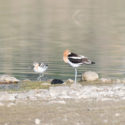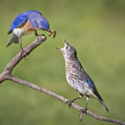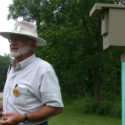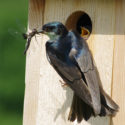 Photo ©
Keith Williams
Photo ©
Keith Williams

Land Trust Grants
Want to accelerate and amplify land stewardship and bird conservation with land trusts on private lands? The Cornell Land Trust Bird Conservation Initiative grant program will award around $230,000 to as many as 14 projects. There are two types of grants available:
- Capacity and Partnership Projects: up to 6 grants of $5,000 each
- Management and Restoration Projects: 8 grants of $25,000 each
Applications are due March 1, 2023 with funds dispersed at the end of May. To learn more and apply for a grant, visit the Request for Proposals.

New Chapter in NJ
We’re extending a warm welcome to the newest NestWatch Chapter, Woodford Cedar Run Wildlife Refuge! Cedar Run is located in Medford, New Jersey, and this chapter will be headed by Keith Clayton and Erin Rounds.
The refuge, nestled within New Jersey’s pine barrens, educates more than 25,000 students per year via classroom demonstrations, summer camps, and various citizen science programs. This year, Cedar Run will be installing 30 bluebird boxes, and Keith and Erin plan to use NestWatch resources to help them start up new projects involving Wood Duck and Eastern Screech-Owl boxes.

Preserving Legacy
In July 2022, Ohio lost a longtime champion of conservation. Mr. Dick Tuttle had been building, maintaining, and monitoring nest boxes for five decades in his community. Upon his death, friends rallied to digitize his nest box data and preserve his 53 years of nest records in perpetuity for NestWatch. On our blog this month, we honor his conservation legacy and celebrate the archival of his 17,362 nest records for 10 species of native birds.

Our Focus for 2023
This year, we would like to highlight the conservation needs of a group of birds called “aerial insectivores.” What’s an aerial insectivore? Glad you asked. These are birds that consume insects on the wing—think swallows, swifts, martins, nightjars, and flycatchers (to name a few). This guild of birds has exhibited long-term population declines, so throughout the year we will highlight them and suggest small ways that you can help reverse the declines.
Our suggested activity for January is to help transcribe historical nest record cards for Tree Swallows (one of our biggest historical projects to date). While many of us in northern North America eagerly await the swallows’ return this spring, transcribing old data helps prepare us for migration and nesting season while also ushering these historic data into the NestWatch database! Keep an eye out for more content on ways you can contribute as the seasons change.